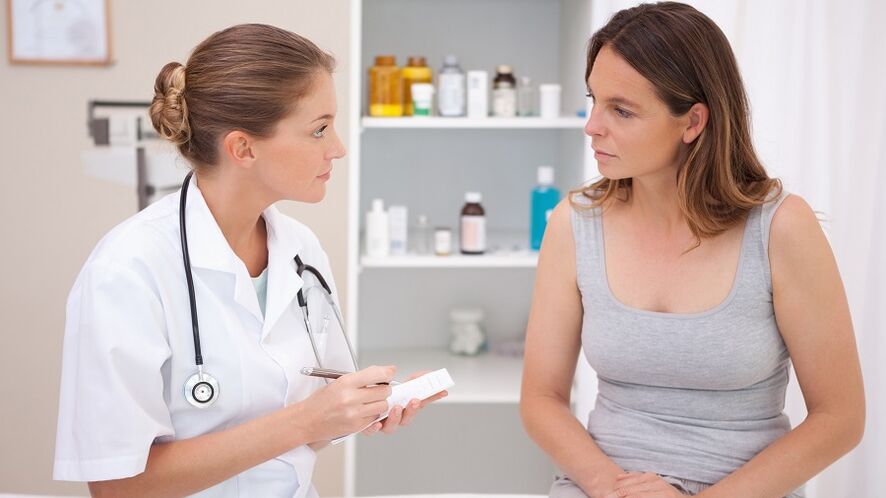Chronic uterine pain syndrome is also known as varicose veins of the pelvic organs or varicose veins in the uterus. This disease is more common in women of childbearing age, difficult to diagnose and has almost no symptoms, but you should know its signs to avoid misdiagnosing women's diseases.
What is uterine varicose veins?
Varicose veins are blockages of blood in the veins, leading to a loss of their elasticity due to hormonal changes or genetic predisposition. The vessels of the lower extremities and pelvic organs are often more susceptible. Varicose veins of the small pelvis are more dangerous than manifestations of a similar disease of the legs in that they cannot be identified with the naked eye, infertility, inflammation of the ovaries, uterus, and vagina can become the result of varicocele. internal veins.
Causes of varicose veins in the small pelvis
There are several theories about the occurrence of this pathology in women of childbearing age. Pregnancy is considered the main cause of uterine varicose veins. conditions appear for the progression of the disease:
- increase the level of progesterone in the blood, which dilates the walls of blood vessels;
- an increase in the load on the pelvic organs (OMT), a violation of their normal blood supply;
- reverse the flow of blood through the ovary veins;
- chronic inflammatory processes of the uterus, appendages;
- artificial termination of pregnancy.
Not all pregnant women are at risk. This disease is genetically determined. Before planning a pregnancy, it is imperative to have a serious examination to rule out health risks and possible complications during childbirth. Uterine varices were detected using ultrasound diagnostics and confirmed the diagnosis by transvaginal computed tomography, ovarian imaging.

Symptoms of varicose veins
This disease can be identified mainly by two symptoms:
- chronic pain in the lower abdomen, aggravated by exertion, during intercourse, in the second half of the menstrual cycle and during pregnancy;
- increased vaginal discharge.
The pain will increase if a woman leads a sedentary lifestyle, sedentary, during inflammation of the genitourinary system. Usually, uterine varices are closely associated with sexual dysfunction. Symptoms may be mild or absent, depending on the stage of the disease:
- the first stage - the size of the veins (diameter) up to 5 mm, the tortuous process of the vessels (small symptoms);
- the second - a vein up to 10 mm, dilation of the parametric veins of the uterus;
- third - more than 10 mm in diameter, a generalized type of varicose veins.
What is dangerous during pregnancy?
If the diagnosis is made before conception, then during pregnancy symptoms may be aggravated by hormonal changes. Many women wonder why varicocele is dangerous and how to deal with it during pregnancy? If a woman is constantly monitored by a doctor and monitors her health, then a violation of blood flow during pregnancy is not dangerous. In rare cases, varicose veins of the small pelvis can be a reason to appoint a cesarean section, less often - it can cause placental insufficiency.
Diet for varicose veins
In the treatment and prevention of varicose veins due to various causes, nutrition plays a very important role. Doctors recommend giving up strong coffee and tea, limiting the use of sugar and salt. It is very helpful if you fill the diet with fresh vegetables, fruits, vegetable oils. Such a diet has a beneficial effect on blood flow, the condition of the walls of blood vessels, prevents stagnation of fluid in the body, helps to reduce the load on the veins. It is important for pregnant women to limit the amount of fluid they drink, as hormone levels cause blood stagnation.

Treatment of varicose veins of the small pelvis
Once the signs of varicose veins have been identified, after confirming the diagnosis, the patient begins to be treated conservatively with the support of drugs and physical therapy. If treatment does not improve and the pain persists, they must resort to surgery. An important question for many people is how to treat varicose veins during pregnancy? At this time, the woman needs to be under the supervision of a doctor for supportive therapy, and after childbirth - must be treated aggressively.
Taking venotonics
The first thing to treat stage 1-2 varicocele is intravenous medication. Phlebologist appoints them after a thorough examination. Venotonic drugs are prescribed. Take the drug for two to three months under the supervision of a doctor. During this time, the pain sensation of OMT should be greatly reduced, and menstrual pain syndrome should also be reduced. It is better to combine such treatment with health-promoting exercises.
Exercise
Compulsory physical activity includes long walks and no-load exercises that relax the cervix and the muscles of the perineum - these are "birch", "bicycle" exercises. Special therapeutic breathing exercises are very helpful - even deep breathing with the inclusion of the muscles of the lower abdomen. Also present is wearing tight underwear and pants to support the legs, vascular plexuses of the perineum and buttocks. An additional beneficial effect is provided by the contrast shower.

Varicose veins surgery
If pharmacologic therapy does not improve, the pain does not improve, or the third stage of varicose veins of the small pelvis is diagnosed, then surgical intervention should be selected, the degree of choice, given the nature of the treatment. to the site of the backflow:
- varicose veins of the ovary;
- ovarian vein thrombosis;
- angiography (contrast administration);
- Open removal of gonadal veins.
If the patient's varicose veins are observed not only in the pelvic organs, but also in the legs, then the Troyanov-Trendelenburg operation is used, which consists in the removal of the great hemisphere vein. This method is popular in the fight against the third stage of uterine varicose veins and total varicose veins. With early diagnosis, it is possible to avoid surgical intervention, preventing its development in the early stages. It is necessary to exclude factors that are companions of varicose veins and complications:
- smoke;
- alcohol;
- sedentary lifestyle;
- buying medicine by themselves when changing hormones, having gynecological diseases;
- improper nutrition.

























